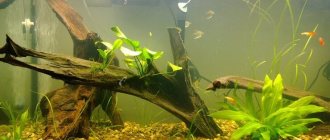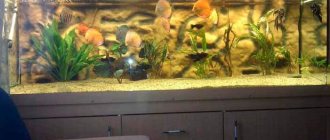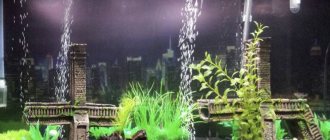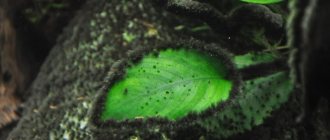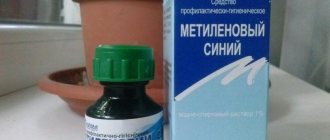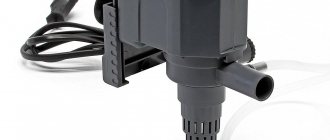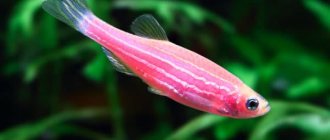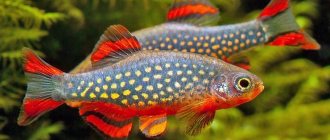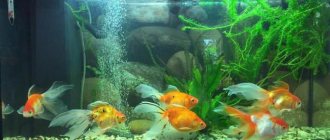Why do people keep aquarium fish? At home, in offices, in medical centers and childcare centers, aquariums are not uncommon. Some fish calm them down, others are taught to take care of them, while others are confident that a properly installed aquarium is the key to wealth and prosperity according to Feng Shui. Whatever the reason for the desire to get acquainted with the underwater world, it is important to know what the aquarium consists of. This article is for beginners: how to choose an aquarium, what you need for an aquarium to keep the fish healthy and happy.
Aquarium: yesterday and today
Modern aquarium keeping is completely different from those plexiglass tanks that our dads kept when they were little tomboys. A little soil, thickets and guppies swimming between the leaves - this is what a typical Soviet aquarium was like. Experienced aquarists, of course, even in those days approached the issue competently: they arranged light, filtration, aeration, and created the landscape of the underwater world. But this was rare.
Today there are even specialized fish farming stores that offer turnkey aquariums. If you wish, you can even entrust the installation and maintenance of the aquarium to an expert who will come regularly and perform the necessary manipulations. However, an aquarium for beginners will do without pathos. It's simple.
Don't overfeed your fish
This is the most famous rule that probably everyone who decided to buy an aquarium has heard. However, sometimes even experienced aquarists find it difficult to resist throwing food into the aquarium while looking into the pitiful eyes of the fish.
Overeating has a negative impact on the health of fish, so it is important to remember: it is better to underfeed than to overfeed. Obesity in fish cannot be treated and leads to their death. In addition, the remains of uneaten food spoil the water. This not only negatively affects water quality, but also leads to uncontrolled algae growth.
If you do not live alone, then explain the dangers of overfeeding fish to your family and friends.
Once a week, as a preventative measure, we recommend having a fasting day, during which you do not feed the fish at all. This small fast will have a positive effect on their health.
Where to begin
Before practical mastery of aquarium keeping, you should study the theory and determine:
- Position of the aquarium in the room;
- Desired inhabitants;
- Dimensions, shape, volume;
- Design.
It is also important to assess your own capabilities: are you ready to take care of large fish, treat and nurse expensive ones, regularly clean the soil and change the water. If yes, then you can move on to practice.
Aquarium stand
Before you go to the store for a new “jar”, and immediately for the fish, you need to decide where the aquarium will be located. Small aquariums up to 40 liters are allowed to be installed on a regular desk. They are not bulky, not heavy and not demanding on the surface.
The placement of larger aquariums is only permissible on a special reinforced surface: an aquarium cabinet or table firmly standing on the floor. The tabletop should not “play” or sag. For this purpose, aquarium cabinets have a special rigidity frame: additional ribs that start from the tabletop and reach the floor. The weight of the aquarium is:
- Glass;
- Soil and decor;
- Water.
The entire load falls on the bottom, which must be absolutely flat. A substrate is made under the aquarium: a special one or made of insulation for laying the laminate. The substrate should be slightly soft to smooth out any unevenness in the bottom. Before installing the “jar,” thoroughly clean the surface of stones, dirt, and grains of sand.
Determining the place
It is very important that the water is not exposed to direct sunlight. It is strictly forbidden to:
- Place the tank on the windowsill;
- Place it in the shade without equipping it with a lamp.
The abundance of sun leads to the growth of algae on the walls. Such aquariums turn green when they stand in the sun for a long time! It is difficult to clean this plaque, so it is better to avoid “greening”.
Aquarium shape
The possibilities for manufacturers are endless: aquariums can be curved, round, flat, classic, low, high. Which to choose? Let's look at the pros and cons of different types:
- Rectangular is a time-tested classic. Easy to use, easy to see, easy to decorate. Some companies produce rectangular aquariums with curved front glass, giving visual depth and volume. Common types of rectangular aquariums are polygonal and cubic;
- Corner, triangular - fits well into the interior. Only very large containers cause inconvenience: you may not be able to reach the back walls when cleaning;
- Built-in – made to order, according to the client’s measurements. Cons - designers usually do not take into account that the aquarium needs to be cleaned somehow. There should be a space of 30-40 cm above the structure;
- Suspended - the maximum volume of such a tank is 25 liters. Large aquariums require reliable support. The exception is the aquarium painting. Usually they are large in volume, and their width does not exceed 15-20 cm. The paintings are attached to the wall in a special way, after which the structure is complemented with a luxurious baguette;
- A ball (round) is the most inconvenient in everyday life. It is difficult to organize the conditions that any fish requires: it is difficult to attach a filter, hide wires or place a heater.
Volume
It seems that the larger the tank, the more difficult it is to maintain. But that's not true. In small aquariums, biological processes occur faster and nitrates and nitrites accumulate. Frequent small water changes are required: every few days up to 1/5 of the volume. For comparison, a 150 liter aquarium requires replacing ¼ of the volume every 2-3 weeks. Therefore, objectively, it is more difficult to take care of a 30-liter aquarium than a 130-liter one.
Lid
Many fish are jumping. To prevent them from “escaping,” the aquarium is covered with a lid: from simple glass with a processed edge to complex structures with built-in lighting.
Factory or homemade?
There are several aquarium factories in the country in Moscow, St. Petersburg and other cities. Foreign companies are also in demand: Polish, Chinese. But if you need an aquarium of individual sizes, one way or another you will have to turn to private manufacturers. The main thing is that the master is experienced and proven. Properly made aquariums last as long as factory ones.
Don't rush to buy fish
It is difficult to refrain from buying fish when purchasing an aquarium. And this needs to be done. The fact is that after launching the aquarium must stand for several days, or better yet, a week. During this time, it will be populated with beneficial bacteria, and the water parameters will stabilize in it. If you introduce fish right away, they may die.
Equipment
When the choice of an aquarium is made, immediately buy the equipment. Any tank, regardless of volume, needs:
- Filter;
- Compressor aerator;
- Heater.
These are mandatory devices that must be properly configured and turned on around the clock! Oxygen and filtration are the basis of life in an aquarium. And the heater prevents the temperature from dropping critically.
Basic devices are selected based on volume and “population”. A novice aquarist will most likely choose calm, small and inexpensive fish. In this case, you can take a weaker filter. But some fish - such as goldfish or koi - are incredibly dirty, and for them filtration must be especially intense. Decide which fish will inhabit your new home aquarium - and then choose the equipment.
Filter
There is external and internal. A beginner rarely chooses an aquarium larger than 100 liters, so an internal system will be sufficient.
Compressor
Some filters have a built-in aeration function. But if finances allow, get a separate compressor with tubes and tips that are buried in the ground. It is aesthetically pleasing and convenient. The downside of compressors is that almost all of them are noisy. But you quickly get used to this monotonous hum, and when the compressor suddenly turns off, you become uncomfortable with the silence.
Heater
It is better to choose this device with a regulator and automatic shut-off. It constantly maintains the set temperature and turns off on its own. Just in case, hang a thermometer in a visible place.
Other devices
What is needed for an aquarium, besides the base? Lighting with a special or regular lamp, possibly a circuit breaker. Cleaning and care items:
- Net;
- Tube for cleaning soil;
- Scrapers and sponges;
- Tests for water.
Decor
Along with the question of how to choose an aquarium, the task of how to decorate it immediately arises. Basic rules:
- The soil layer is 2-10 cm. Depends on the height of the glass and volume. You can calculate the number of kilograms using formulas. Fraction and color - optional. The more soil, the easier it is to create a unique landscape and carefully plant each plant without damaging the root system;
- Plants: natural or artificial. They create shadows and nooks for fish;
- Stones, driftwood, minks, ceramic pipes and pots, castles and other elements: what you want and what future “settlers” need;
- The background can be pasted with a pattern or plain.
Let's start the aquarium
Before adding new residents, start the aquarium properly. The procedure is the same for all tanks:
- Pour in water, fill in the soil (rinse it and even boil it if you collected it yourself in nature), distribute the decor, turn on the filter and compressor. A little trick: to make starting the aquarium easy and quick, place an old, unwashed sponge from another aquarium in the filter. It will spread bacteria so important for the formation of the biosphere;
- Wait 5-7 days. The aquarium will warm up to room temperature, the chemical elements that are present in tap water will evaporate;
- Conduct water tests: pH, gH, chlorine. When the indicators reach normal, you can release the fish.
Weekly Events
Dirty water is one of the likely causes of illness and poor health of aquatic inhabitants. Every week you should add 20-30% of the water volume in the tank. The acidity, hardness and temperature of fresh water must match the water in the aquarium. First, it should be left for 2-7 days (depending on the type of fish and the environment that suits them). Instead of settling, you can use special preparations and conditioners that bind heavy metals.
Weekly care of the aquarium and fish also includes:
- Soil cleaning. It is carried out simultaneously with the intake of stagnant water from the aquarium using a siphon. The siphon works on the principle of a pump; it is equipped with a tube for draining water, a bulb and a funnel (cylinder) with a protective mesh. By moving a funnel along the bottom, aquarists squeeze the bulb. The liquid, along with the remaining organic matter, enters the cylinder and ends up in a bucket or other container through a hose. This way you can get rid of dirt from the bottom and carry out partial water intake.
- Measurement of hardness and acid-base balance. Pet stores sell special litmus strips for this purpose. They show permanent and temporary water hardness (DH and KH), pH balance. If the values are outside the acceptable limits, take action (hardness can be reduced by pouring melt water into the tank, and increased by adding baking soda).
- Washing the filter. If the water flow from the filter is weakened, the device requires cleaning. After disassembling the filter, you should carefully rinse its parts under running water (if it is mechanical). If the filter is biological, chlorinated tap water will kill colonies of beneficial bacteria that cleanse the ecosystem of pet waste products. Experts who know how to care for an aquarium recommend rinsing the filter sponge in water drained from the aquarium.
- Cleaning glass and decorations. Glass cleaning is carried out on both sides. And if the surface can be cleaned from the outside using detergents, dirt from the inside should be removed with extreme care. Sponges, scrapers, magnets and even plastic cards are used for this. The main thing is the absence of metal elements that can scratch the glass. Caring for aquarium fish is made easier by catfish (Ancistrus, for example). They perfectly clean the walls of the tank from bacteria.
Populating the aquarium
Fish can be predatory, aggressive, shy, timid, nocturnal, or diurnal. Some people need the company of their own kind, others cannot stand this company. While the water is being prepared, the parameters are normalized, the biological component is emerging, the future aquarist can choose pets to his liking.
What fish are suitable for beginners? Calm, peaceful, small:
- Guppy;
- Swordtails;
- Barbs;
- Angelfish;
- Neons;
- Rasbory;
- Minors;
- Ternetia;
- Lyalius.
The list is extensive. And this is only a small part of the huge aquarium world! How to choose fish and what to pay attention to when reading the information:
- Aquarium parameters: what volume is needed, what temperature, acidity, hardness;
- How often should you clean the aquarium, how to do it correctly;
- Requirements for soil, aeration, decor;
- Feeding issues: some fish can easily cope with dry food, others require natural protein food;
- Compatibility of fish, their temperament, character, habits.
